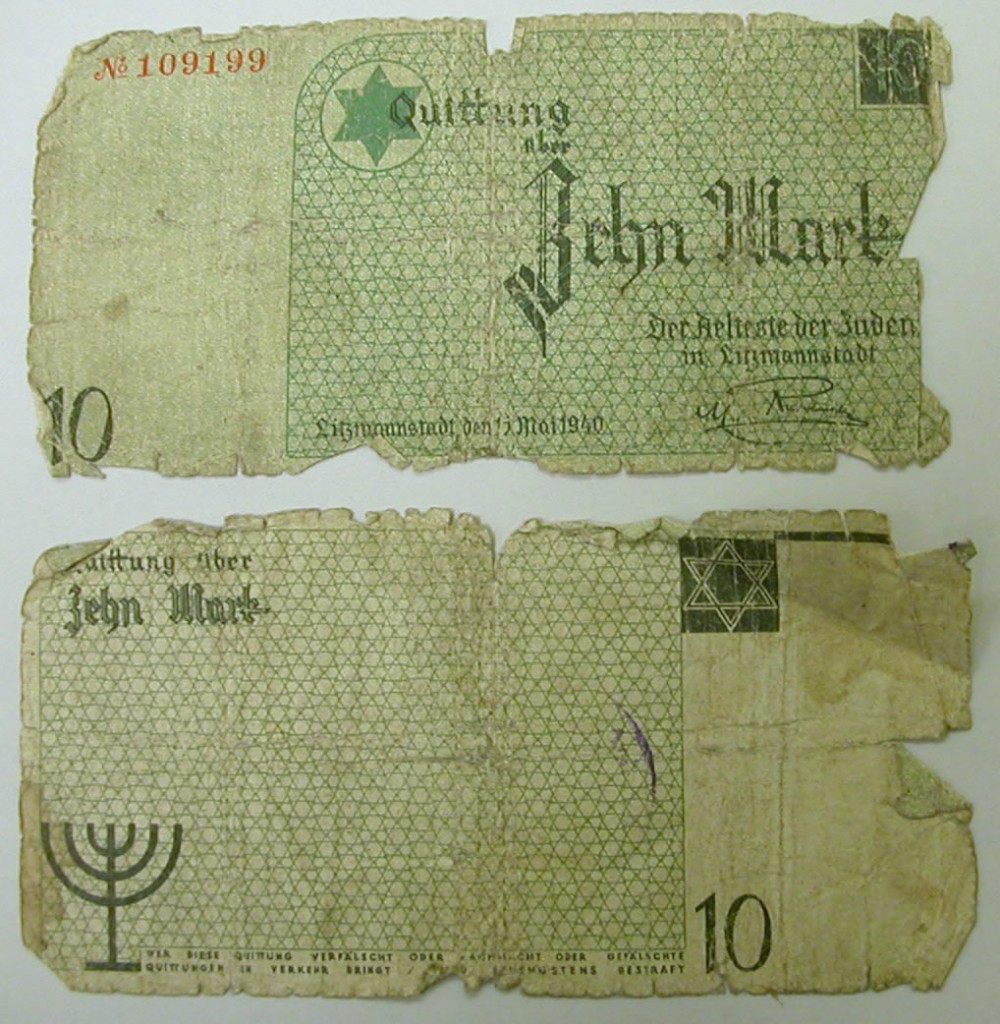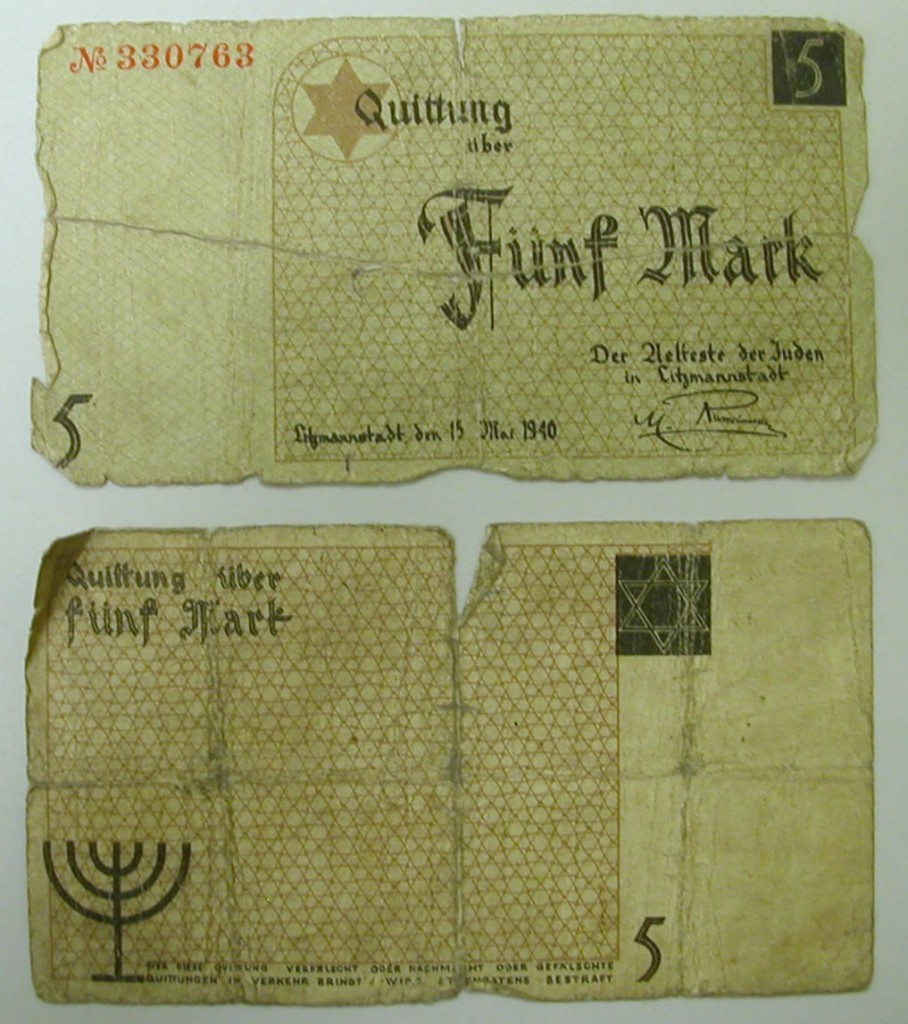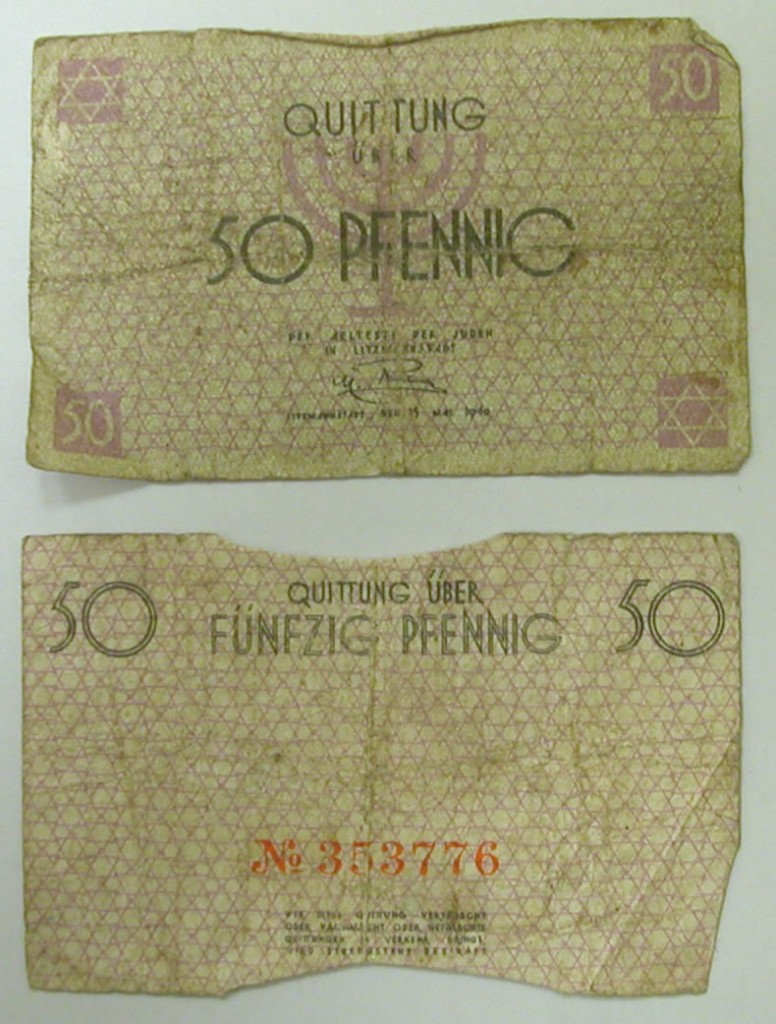“Ghetto Gelt: smuggled out of Warsaw, Poland…circa 1980”. A white post-it, attached to a plain envelope containing a few frayed paper bills, one coin. A gift from a friend of the Frances-Henry Library who had taken a tour of our Rare Book Room a few days earlier. I open the envelope and carefully spread out the contents on my desk. My vision blurs, and for a split second I stop breathing. I am holding “money” printed by the Germans for the use of Polish Jews, in the Lodz Ghetto. My first thoughts: What did this money buy? For how long? The many hands that touched this money – which ones of them survived? Which ones didn’t? And now that we were given this gift, how can we ensure that they are made visible and become useful to our academic pursuits at Hebrew Union College?
I let Librarian sensibilities take over, and turn to Sheryl, our consummate cataloger, for help.
“Realia”, she determines, we’ll catalog them as artifacts. In our world, as Wikipedia explains, the term realia refers to three-dimensional objects from real life such as coins, etc., that do not easily fit into the orderly categories of printed material. They can be either man-made (artifacts, tools, utensils, etc.) or naturally occurring (specimens, samples, etc.), usually borrowed, purchased, or received as donation for use in classroom instruction or in exhibits.
Initial research yields a source that holds the details that will help us describe and place the money in its context: Jewish Ghettos’ and Concentration Camps’ Money (1933-1945) by Zvi Stahl (1990). The second chapter contains images identical to the paper money we now own, and the story behind the German decision to produce it. We now have the tools, and soon enough the objects are placed in protective envelopes and the record entered in our online catalog. They join items such as stamps, coins, photographs and playing cards that enrich our collection, presenting opportunities to touch, smell and make good use of tokens of our past.
Post script: the Lodz Ghetto money was presented to the library while I was away in Israel. During a visit with one of my uncles, Yaʻakov Refalovich, he presented me with a copy of his memoirs, hand-written by him, printed and bound by his grandchildren for his 80th birthday. One of the chapters in the books told the story of his survival in the Lodz Ghetto. Having been published in a limited edition, the book was placed in the Rare Book Room as well. A week before Holocaust Memorial day…and so it goes…
Yaffa Weisman




Wow! I am currently reviewing “The Emperor of Lies,” which is a fictional account (based on fact) of the Lodz Ghetto. Their currency was “affectionately” known as “Rummies,” after the Chairman of the Jewish Council, Mordechai Chaim Rumkowski,who hoped to make Lodz a model city where there were factories and cultural centers.